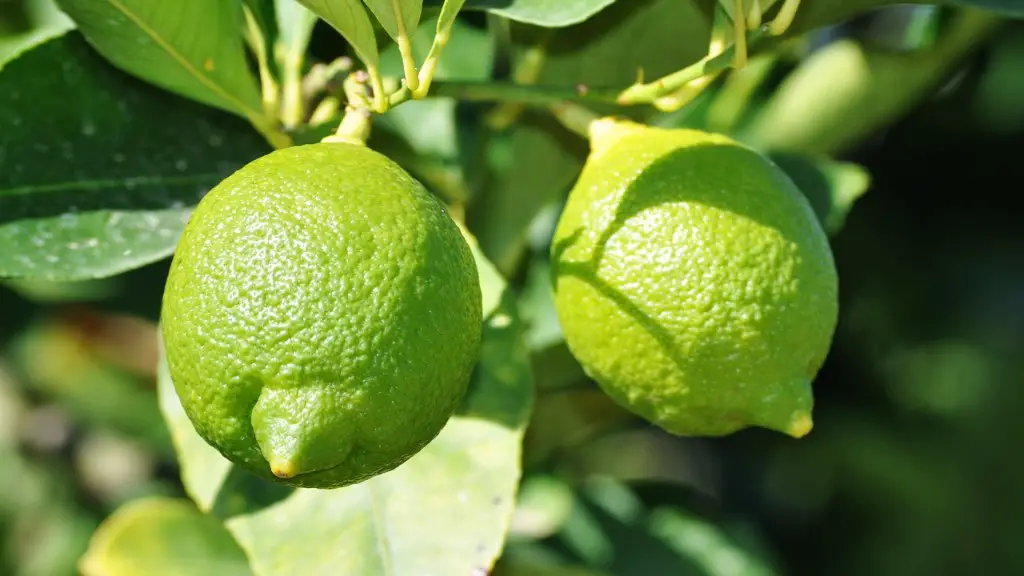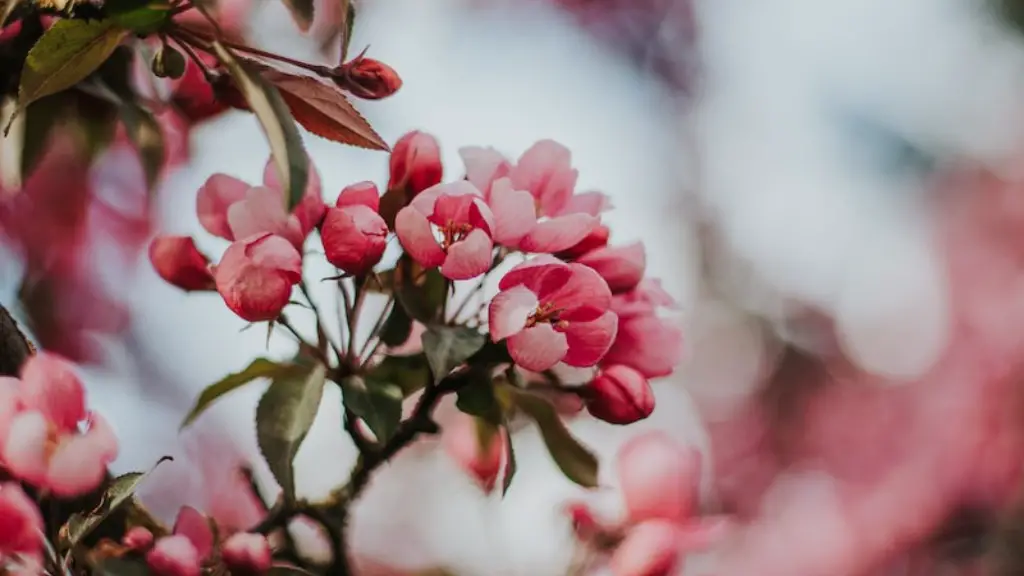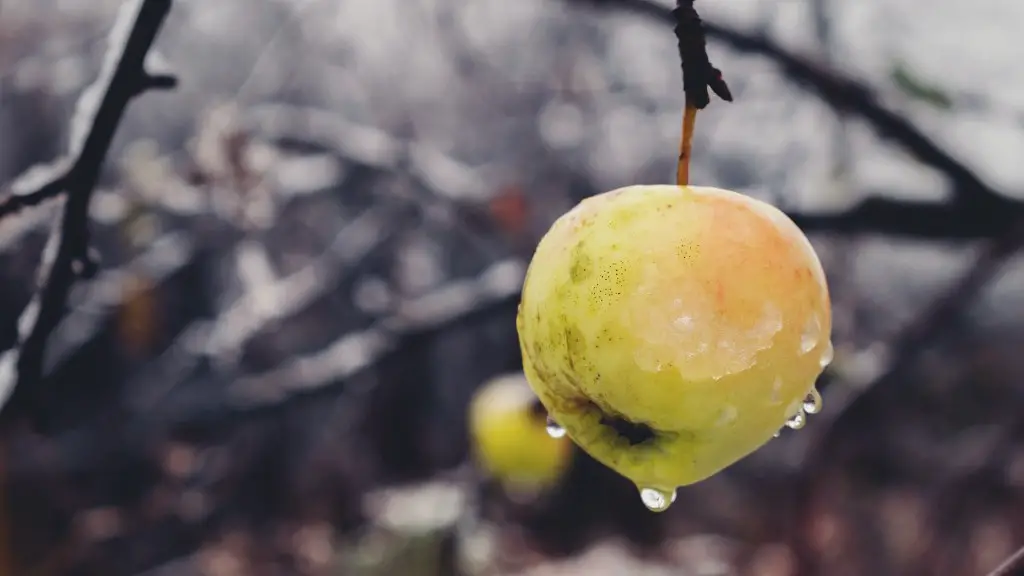Winter is an unusual season for lemon trees to flower, as they typically only do so in the spring or summer. But it can happen that the tree will start blooming during this colder time of year – a phenomenon known as vernalization. This is a term used to describe how plants respond to temperature, day length or other environmental cues, causing them to enter into a flowering or fruiting part of their development cycle.
A possible explanation for why a lemon tree might be flowering in winter is exposure to colder temperatures. This type of exposure can trigger a vernalization response in some plants, prompting them to begin blooming even though it’s not the typical season for them to do so. In some cases, a cold snap may be enough to cause a lemon tree to flower in winter, although this is a rather uncommon occurrence.
Another cause for why a lemon tree may flower in winter is exposure to light. Lemon trees, like other plants and trees, are usually triggered towards flowering or fruiting by the amount and quality of light they get. During the winter, when days are shorter, the amount of light a lemon tree may receive can be lower than what it needs to enter its little growth cycle, leading to it blooming in the winter.
The root structure of a lemon tree could be another potential cause of why it may flower in winter. If the root structure of a lemon tree has been weakened or damaged, it may prompt the tree to enter into a flowering state at a different time of year. The root issues may be due to inadequate water supply or soil nutrients, or it may be caused by pests, fungi, or soil compaction.
Finally, changes in the soil pH may contribute to a lemon tree flowering in winter. Lemon trees thrive in soil that has a neutral pH, yet changes in the pH balance of the soil can stress the tree out. These changes can lead to the tree unexpectedly entering a flowering period, even if it’s in the middle of winter.
Changes in Air Temperature
Changes in the air temperature can have a huge affect on a lemon tree blooming in winter. If temperatures drop too much, then the lemon tree may go into a dormant state or enter flower/fruiting mode as a means of self-protection. This isn’t as common a cause as the others detailed here, but it has been known to happen before.
The tree’s location in the world can also play a role in why it might flower in the winter months. Lemon trees are somewhat sensitive plants that require optimal temperatures and day lengths in order to grow and produce fruit. So depending on where the tree is located, different seasonal patterns could be produced.
What’s more, the type of lemon tree could also explain why it is flowering in winter. Some species of lemon tree are better adapted to different climate zones and may therefore flower at different times of the year than other types of lemon tree. Knowing the exact variety of lemon tree you have is therefore key to understanding why it might be flowering in winter.
The timing and method of pruning could also cause a lemon tree to flower in winter. If a tree has been pruned too early in the season, it may be forced into a flower response before the typical flowering period for that lemon tree. On the other hand, pruning during the fall or winter months can actually help to ensure that the lemon tree flowers during this time of the year.
Inadequate Nutrients
Lemon trees also require adequate nutrients and minerals in order to thrive and flower at the right time of year. If these nutrients are lacking, then the tree may enter into a flowering stage much earlier than expected. Poor soil quality or the lack of fertilization can typically lead to a vitamin or mineral deficiency, leading to the tree’s vernalization.
Inadequate watering can also cause a lemon tree to flower in winter, as this deprive it of hydration and therefore the energy to produce flowers and fruit. Watering a lemon tree regularly during the summer and fall months is essential for a healthy blooming period in the spring or summer.
Finally, certain environmental stresses, such as frost and hail, can damage or kill a lemon tree’s flowers and leaves. On rare occasions, the tree may react to this damage by entering an early flowering stage. This process is known as “Winter flowering” and it typically only occurs when the environmental stress has been particularly bad.
Pruning
Although pruning is usually seen as a beneficial activity for a lemon tree, it is important to note that the timing and manner of pruning can cause a lemon tree to flower in winter. Pruning should normally be done between the fall and early spring, rather than during the middle of winter.
The type of pruning implemented is also vital for avoiding a winter flowering period. For example, aggressive pruning or topping of the tree can send it into a protective flowering mode, so such practices should be avoided. Bracing, or judicious and selective pruning, is the best type pruning for a lemon tree.
When pruning, it is best to only take off dead, diseased, or broken branches. This ensures that the tree’s growth is maximized and gives it the best chance of flowering in the right season.
Finally, pruning should be done with the overall health of the tree in mind. Removing too much of the tree or trying to shape or control the tree’s growth too much oftentimes harms the tree and can lead to unexpected periods of flowering.
Insects and Pests
Insect infestations or the presence of pests can also cause a lemon tree to flower in winter. In particular, borers, scales, and aphids are common insect and pests that feed on a lemon tree’s foliage and sap. These organisms weaken the lemon tree and often cause it to flower earlier than normal.
The best way to prevent bug infestations from affecting a lemon tree is to have an effective insect and pest control plan in place. This should involve inspecting the lemon tree regularly, identifying potential pests, and managing any insect populations or pests that may appear in the area.
It is also important to ensure that the lemon tree is in optimal health before attempting to ward off any pests or insects. This means regularly watering the tree, pruning any dead branches, and maintaining the tree’s soil pH.
Finally, it is also essential to take steps to reduce the presence of any potential disease or fungus that might be present in the area. Many of these diseases and fungi can weaken the lemon tree, making it more susceptible to insect or pest infestations and causing it to enter a flowering cycle prematurely.
Fertilization and Plant Care
In order for a lemon tree to thrive and flower in its natural season, proper fertilization and care is necessary. A healthy lemon tree usually receives its required nutrients from the soil it is planted in, though sometimes supplemental fertilization may be needed. An appropriate fertilizer should be used to ensure that the lemon tree has the correct levels of nitrogen, phosphorus, and potassium.
It is also important to ensure that the soil the lemon tree grows in is able to retain water. A soil with a high water retention capacity will protect the lemon tree from too much or too little water, both of which can weaken the tree and make it more susceptible to winter flowering.
Finally, mulching the soil around the lemon tree’s roots is also beneficial, as this helps to retain moisture and control the soil temperature. This keeps the lemon tree in a healthy state and helps prevent it from entering into a flowering period prematurely.





